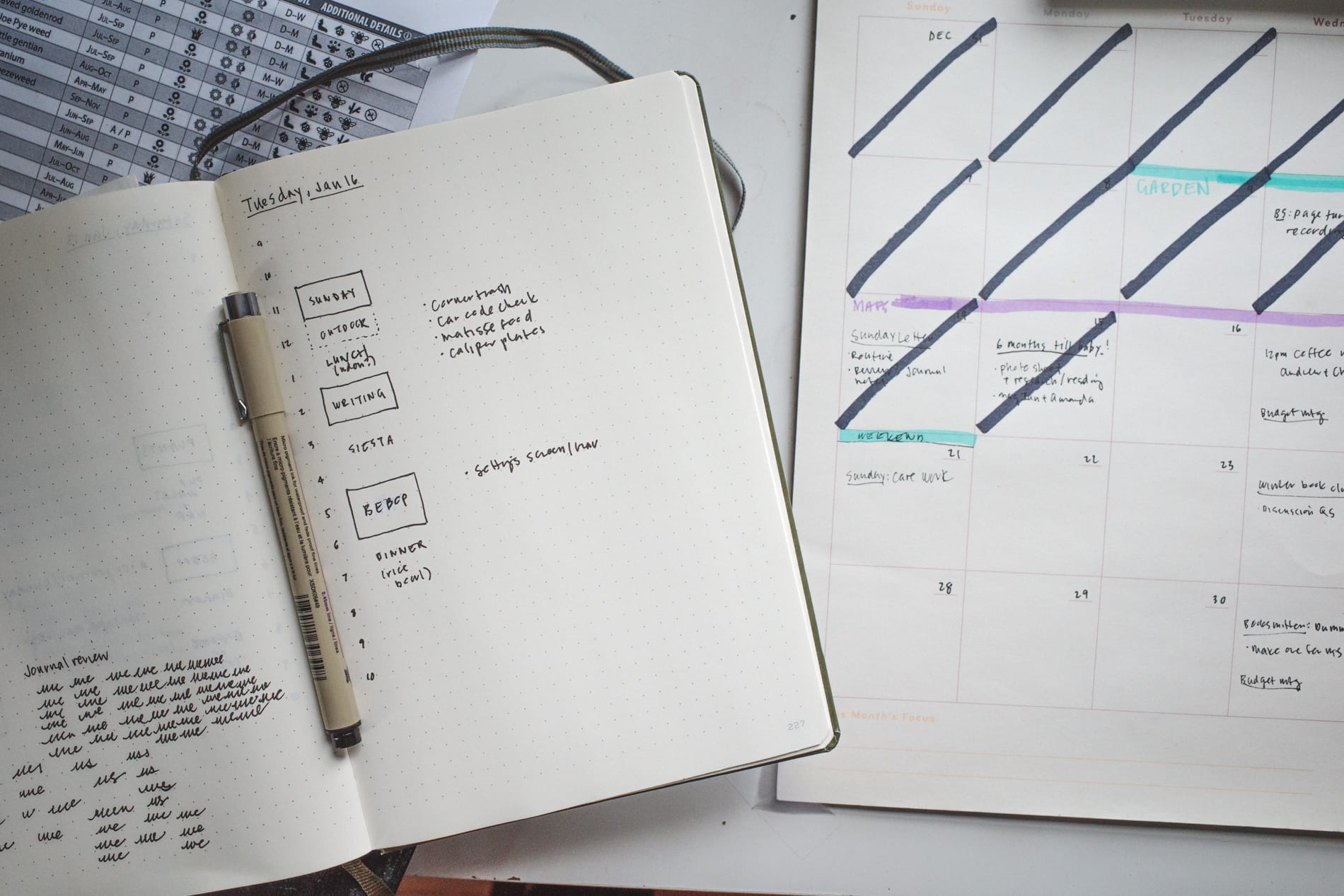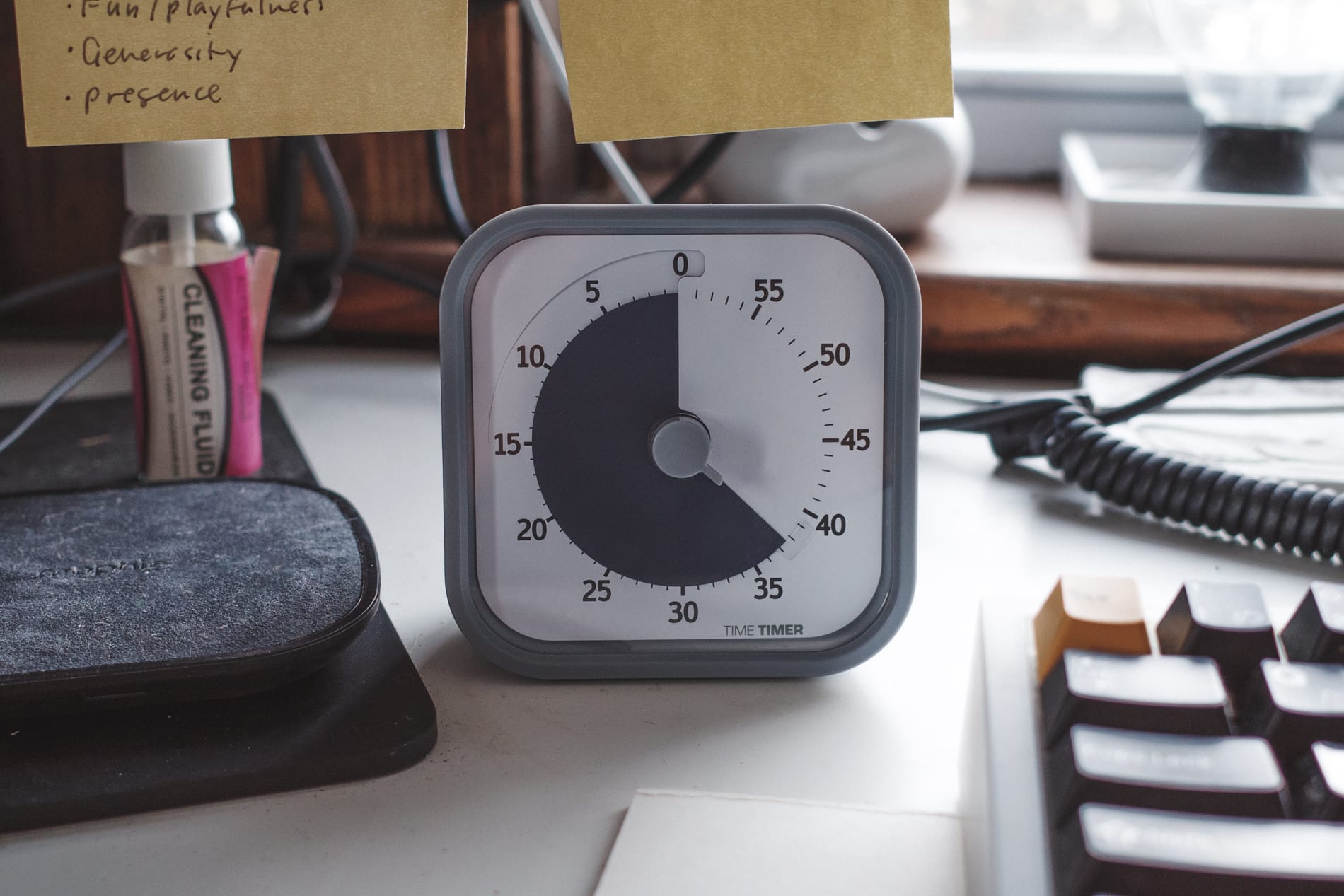The last one of these posts I did in 2020, but as with many things that year it’s been lost to the vortex (I found it). In most of my thirties my routine was built around acts in sequence, a Rube Goldberg machine I became wholly dependent on – to the point of rigidity. A single mis-spaced domino would threaten the whole system. I’m surprised it held up for as long as it did.
Since then I’ve been trying to become more adaptable. The analogy I used in a recent Dumpling Club newsletter was that of turning an ocean freighter; I’m finally faced the right direction, even if I’m not yet going full speed. But it’s actually more like I’m trying to take apart the cargo ship and build a sailboat: less stolid but still meant for long distances – and far more maneuverable.
The clearest reason for all this freighter-turning: Julia and I are, after two years of trying and treatment, and two early-trimester miscarriages, now fourteen weeks pregnant. Writing grounds me, but I can’t see my practice not changing if/when I become a stay-at-home dad. Instead of treating my routine as the trees in the forest, I’ve begun to think of it more like the groundcover. Still essential, just taking on a different role than before; not tasks performed at specific times of day but blocks to fill variable days.
Wake, Coffee, Crossword (1 hour)
My alarm’s set for 7:30AM. It was 8:00AM a few weeks ago, but I’ve pushed it earlier now that we’re past the solstice. Sleep has been less than consistent; sometimes I wake at five, other times I blow past the alarm. Julia works from home (she’s a therapist) and her start time can vary within a three hour range. We’re often each other’s bed sirens (the Homeric kind) and couple of times a month I’ll get an insomnal two-hours, which is probably my body telling me to take a day off (and that I’ve entered my forties).
I go downstairs and get coffee: one mug of half-caf, cause I’m especially sensitive, and a full cup of half-caf is more psychologically satisfying than a half cup of full-caf. I grab the day’s crossword from the printer in the study. I don’t want my phone to be my morning mental stimulant, and the only thing still tethering it to my bedside was the New York Times Games app. So during a recent Dumpling Club co-working session, I wrote a script to automatically send the day’s crossword to my printer.
Hygiene, Exercise, Breakfast (1 hour)
Exercise is either a spin ride or a pup walk, which I’m sometimes more motivated to do than the pup. Mondays mornings I have a weekly catchup call with J, and Fridays one with A, so I can multitask those. Sometimes walks happen after lunch if Julia has an afternoon break or cancelation. My goal for 2024 is to move my body five days a week.
I’m on a Honey Bunches of Oat kick. Over the fall it was Greek yogurt and granola. After breakfast I have my go-to black tea, same as I’ve been drinking for the past 10+ years. I do the dishes while I wait for the tea to boil and steep.
Meditation (15 min)
A far cry from when the half hour I was sitting a decade ago. But in the new year I’ve upped it from ten minutes to fifteen. I added cedar decking to our rubber-roofed terrace this past fall, and if it’s warm and dry enough I’ll sit a cushion on the deck. Otherwise I have a couple different quiet indoor spots.
Journaling and Day Planning (30 min)
I’ve done “morning pages” since I started writing seriously, but I’ve found that word- or page-count targets lead me to overwrite. I switched to a time goal instead, in hopes it will effect a habit of flowing sentences, rather than scattered stream-of-consciousness capture. I typically journal about what happened the day before and/or what I want to do the current day, so this becomes when I plan out my day.
I time block everything in a paper dot grid notebook. I refer to my Fantastical and a monthly paper desk pad that I use as a project calendar. “Project” here is any event that requires work or prep ahead of time: presentations, podcast recording and pub dates, school visits, etc. I rarely have more than a dozen of these per month (if you don’t count the entry every Sunday called “Sunday Letter”). I know I can set up my calendar app to show/hide different calendars but I find this sparser project calendar, on paper, is so much less intimidating. I cross out past dates with a big Sharpie, too, so I don’t even have to see past events.

At the start of each month, I transfer the project-related items from my calendar app to a new sheet on the pad. There’s room on the side for monthly goals and habits, and I’m using some of the spaces to also remind me of seasonal goals. But I tend to overlook these so I’m thinking about getting a chalkboard to track progress on longer-term stuff.
At the end of the half hour, I have a clear look of the day’s priority blocks (solid border) and flexible filler like meals (no border), with their related tasks along the side. I’m trying out dotted-line blocks for low-priority projects and hobbies, but it hasn’t become a regular practice yet.
Writing and Other Work (1-hour blocks)
For writing fiction, I typically go in one-hour blocks, with a few rules:
- I have to sit at my computer, with a manuscript open, for the entire block of time
- It doesn’t matter how many words I write
- No phone/social media
- Reading counts!
The thinking here is that if I sit for long enough, I’ll eventually get bored, and I’ll do anything in my power to avoid boredom – even work on especially difficult parts of a manuscript. My writing blocks typically happen in mornings, but the whole point of the rules, especially the first two, is that when appointments and other obligations come up, I can drop those blocks into afternoon and evening gaps without feeling like I need the perfect writing conditions.
This applies to any kind of work, really. Sometimes it helps to specify the space I want to be in: the study, outside, a reading spot, etc.
A Favorite Tool: My Visual Timer

My ADHD brain struggles with time blindness, and I use this little visual timer to track each block of work. I love it. I can glance at it and immediately intuit, proportionally, how much time has passed and how much is left. I also use it as my meditation timer. I’m thinking about getting one or two more to keep in different rooms.
Lunch, Siesta, Admin
Julia usually has lunch around noon, and depending on the day we’ll eat together or not – typically leftovers from the night prior or whatever we can quickly heat up. In times when it’s feasible to meal prep, this might be a pasta salad or a hearty soup or chili. I recently acquired a tiny 2-quart air fryer, which has been great for things that’d be too much of a chore to bake in a full-sized oven, like brussels sprouts, cauliflower, and certain proteins.
Afternoons are typically for errands and lower-priority projects. Right now those are: 1) Continuing the design of the front yard project that I started in my Building Beauty class, and 2) House or hobby projects like adding more insulation and shoe molding, making mobile bases for larger machine tools, and cleaning and organizing my study.
I haven’t had consistent, scheduled time in the past for life-admin stuff like answering emails, calling customer service lines, reviewing budgets, etc. – which would often lead to messages going long unanswered. One of my solutions this year is to go hang out every Wednesday afternoon at 27th Letter, a favorite local bookstore, for a couple hours of dedicated admin time. Say it with me: Maintenance! Ethic!
Also in afternoons: Reading and a NASA nap, the greatest boon of working from home.
Dinner, Unwind, Sleep
Ideally we limit take-out/delivery to a couple times week, but during busier stretches (like, all of the last six months) it’s more than that. On no-plan nights, we unwind with quiet reading time or a movie or show. Right now, that show is The Expanse, which is the first we’ve semi-binged in a while – and the occasional Studio Ghibli movie when we need a break.
Once in bed, I read till I fall asleep. In the quest to untether my phone I’ve become particularly fond of my clip-on reading light, but most days I’m so tired that I only get a page or two in before I start dream-hallucinating sentences.
Re-reading this all, it doesn’t seem on the surface like a huge change over what I was doing before, but it’s felt like a shift in worldview, like I’m seeing positive space in what was once negative. Maybe I’ll check in again a year or so into fatherhood, if the metaphorical sailboat hasn’t completely sunk by then!
